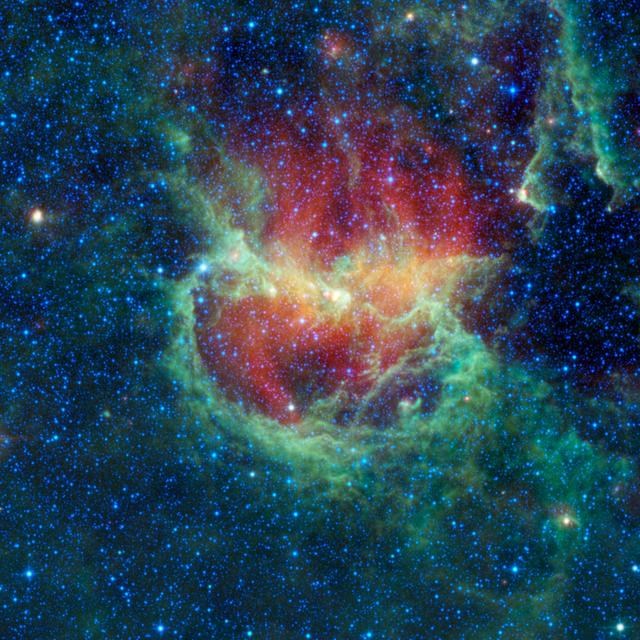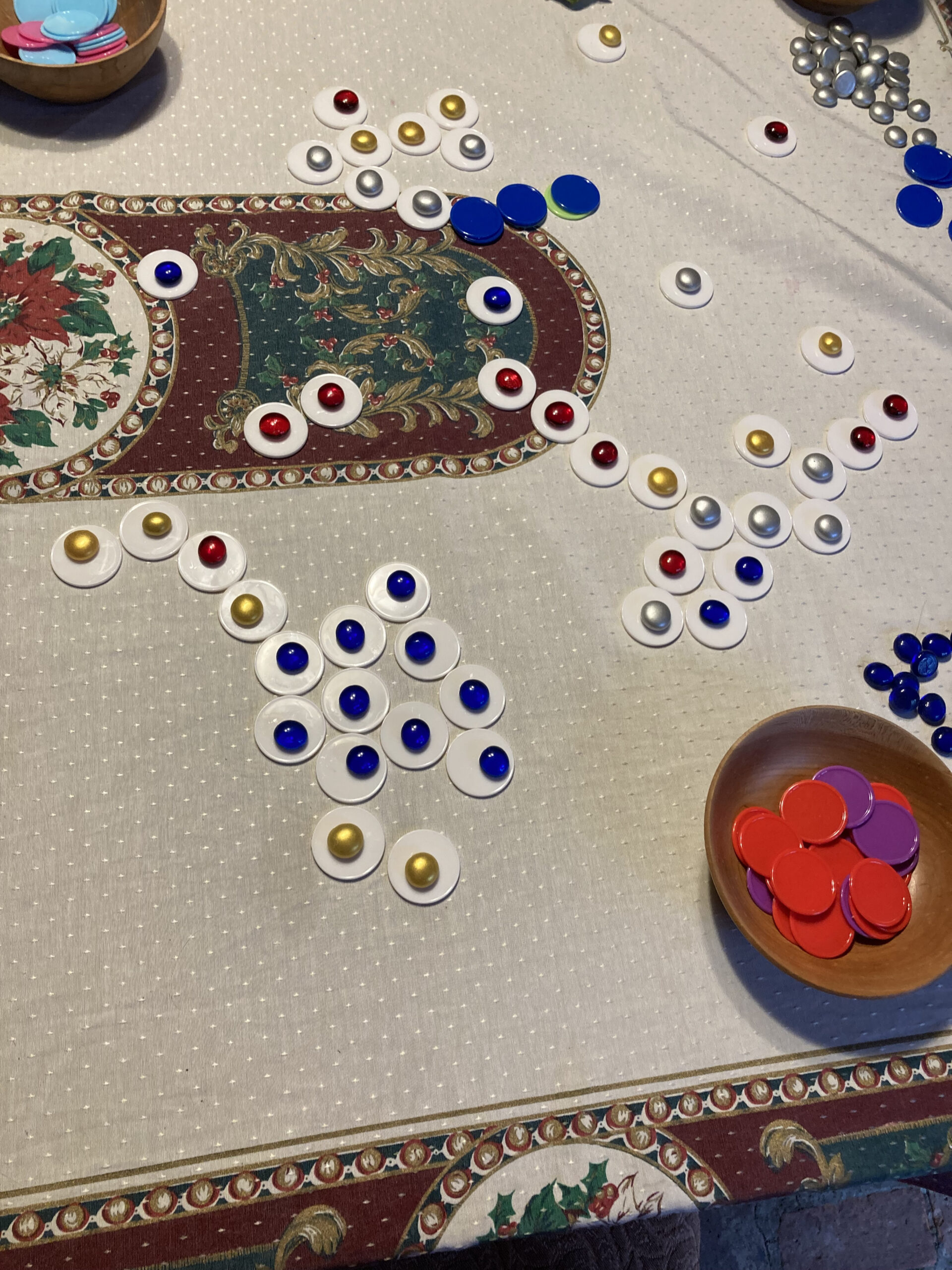
Lambda Centauri nebula, courtesy of NASA/JPL-CalTech/UCLA
Nebula is our free-form game of competitive star formation. At the end of a game, your playing surface should be covered in gleaming colors.

Nebula playtest
Nebula grew from a seed of desire planted when I was teaching physics with sides of astronomy, chemistry, and meteorology at a community college. It’s easy to talk about star formation: the clouds of dust and gas slowly thickening until they reach a critical mass and begin to collapse under their own gravity, eventually becoming a protostar. You can toss in fun phrases like Jeans mass, virial theorem, and Herbig-Haro objects. I wrote all that without really engaging my brain, and certainly without engaging any emotion.
In reality, vast masses of particles half as old as Time are swirling in chaotic streams. These currents bend and eddy as supernova shock waves slam against them, or their tendrils wrap and tangle around another molecular cloud traveling through the same space. Gravity begins to crush the thickest knots. The hottest particles stream off mockingly, escaping gravity’s grip – perhaps to be caught in another knot another day.
It’s vast, chaotic, violent, and beautiful. I wanted my students to feel something of that by getting their hands on a visualization they could explore. I couldn’t find one. Over the years, this desire recurred occasionally, just reminding me it was there. Eventually, it came back but this time, the idea intersected with the idea of a board game. Pile dust and gas into a thick enough knot, and ignite a star.
Interesting.
It’s dangerous to let your inner editor get close to your games in the dream/design/workshop stage. Throw it in a box. Then sit on the box. Get back to design.
I needed something that stacked. Poker chips stack, and we had poker chips. I dove into a second-hand wooden toy chest and eventually pulled out the poker chips. All right, I said to myself, so we need a mechanism for getting these into the hand and from the hand to the table but just focus on the stack. Three or four chips seems like a good, thick stack. Then what?
Let’s just keep it simple. One thick stack equals one star, done. Sure. So, the stack disappears, collapsed under gravity. The star replaces it, igniting from the stack.
Sure, but in the simulation I really want, igniting a star can start more star formation. There’s several ways that a proto-star and pre-main-sequence star can push dust and gas around in the nebula, thinning gas here, thickening dust there. That can help another star to form.
So what if igniting a star in the game could cause more star formation? A chain reaction game play mechanism.
Yes. That felt right.
This was the point where my inner game designer came out with a motion in hand. You see, I like games. I like board games. We played a lot of games after dinner, and it always started the same way: stop everything and clean off the table first. Groan.
Food and games belong together. I always wanted a game that could be played around the salt shaker, the butter dish, and the homework. Here was a game that, at this moment, did not need a board. Could we keep it that way?
At this point, I called my partner. If there was anything in this idea, then it was time to step from dreaming to building the game.
In fact, we could and did keep the game board-free. The salt shaker, the butter dish, the homework, and the cat (if table-sitting) simply become “voids” around which the molecular clouds swirl and the stars are born.
I wanted a beautiful game, something that gleamed in several colors. So, when we needed something for ‘stars’, I pulled the green glass gems out of my Wizard of Oz game, the red glass gems out of the Halloween stack, and the blue glass gems out of our old 7th Sea drama dice collection. We pulled all the white poker chips aside. They became tokens for the glass stars to sit upon, for two reasons. First, the colors would show up beautifully regardless of table surface. Second, the mechanisms we were designing required us to mark the exact diameter of each former dust stack as we played.
It took a few cycles of revision to set up the rules for Nebula. I’m still working on trimming down the instructions. The science behind it is drastically simplified and that’s okay. We have a game of strategy and competition that can be played on any flat surface. We have a beautiful game of gleaming colors.
We simplified the science, but the chaos, the turbulence, the competition, and the beauty: we kept those.
We can’t wait to share Nebula with you. Stay tuned.
0 Comments